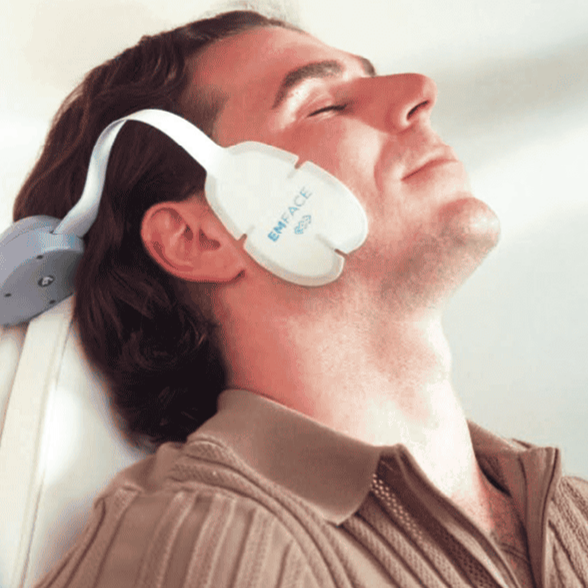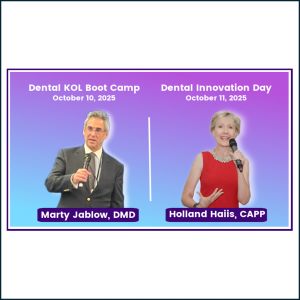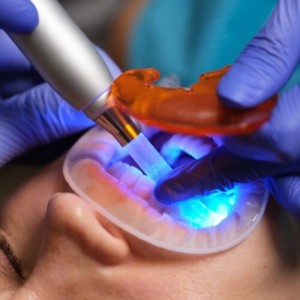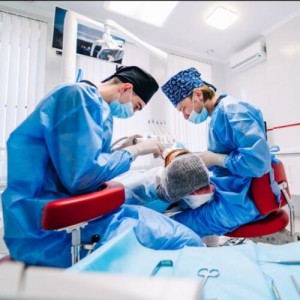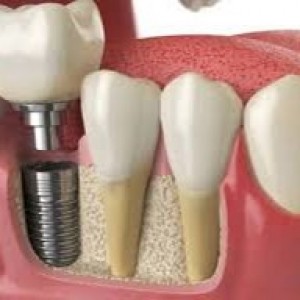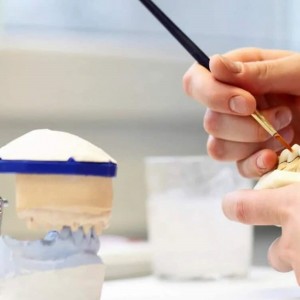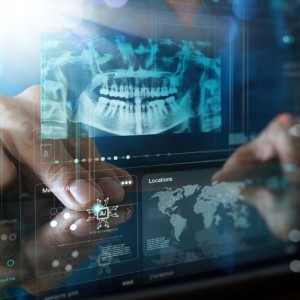
Bringing Innovation to TMJ Management With EMFACE Technology
Jonathan B. Levine, DMD, a New York City prosthodontist, explains how EMFACE is helping treat TMJ, and why his practices regularly use the technology for cases involving muscle spasm, hyperactivity, or related joint discomfort.
Q: How did you first learn of EMFACE and when did you start using it in your practice?
A: I first became aware of EMFACE when the company published its early data on its use for facial muscle stimulation and cosmetic lifting. As practitioners began reporting anecdotal improvements in facial tone, I saw an opportunity: since TMJ disorders often involve dysfunction or overactivity of facial muscles, the device’s technology looked promising. I began incorporating EMFACE under its new TMJ protocol early in 2025 once the company provided me with their prototype protocol.
The learning curve was surprisingly smooth. As a clinician, I found the technology intuitive and easy to adopt. The system is user-friendly—once you understand applicator placement, the synchronized RF + HIFES (high-intensity facial muscle stimulation) settings, and how to monitor patient comfort, integration is straightforward. My team completed manufacturer training, practiced first on aesthetic cases to gain confidence, and then began applying the protocol to TMJ patients. We now use it regularly for cases involving muscle spasm, hyperactivity, or related joint discomfort.
Providing this service became important because many patients suffer ongoing TMJ discomfort and muscle dysfunction that is not fully relieved by traditional therapies (splints, bite adjustment, physical therapy). EMFACE adds a noninvasive modality, no surgery, no injections, that complements what we already do. It enhances our ability to relieve symptoms, improve function, and offers patients an option with less risk and downtime.
Q: How can most dentists become aware of the best methods to treat TMJ? Would you recommend EMFACE to colleagues?
A: Dentists become aware of the best methods to treat TMJ through continuing education, peer‑reviewed literature, specialty meetings (orofacial pain, dental sleep medicine, prosthodontics), and manufacturer‑led clinical training. I always advise colleagues to look for modalities with scientific evidence and regulatory clearance, to stay sharp on the mechanisms (muscle, joint, nervous system), and to monitor patient outcomes carefully.
I would absolutely recommend EMFACE platform and its Functional TMJ protocol to colleagues, particularly those with patients for whom conservative therapies are only partially effective. It broadens treatment options, improves outcomes in muscle‑related TMJ pain, can improve patient satisfaction, and helps practices differentiate themselves. It is a tool that many dentists can adopt with relatively small incremental cost or training.
Q: How does EMFACE Functional TMJ actually work to relieve TMJ dysfunction?
A: EMFACE acts on the masticatory muscles and surrounding tissues simultaneously. The EMFACE Functional TMJ protocol uses ultra-low frequency HIFES technology to gently stimulate the mandibular branch (V3) of the trigeminal nerve, which innervates the masseter, temporalis, and pterygoid muscles, helping reduce overactivity and restore neuromuscular coordination. At the same time, synchronized radiofrequency provides therapeutic heating that enhances blood flow and further relaxes muscles. Working together, these modalities create a synergistic effect that relieves pain and supports more natural mandibular function. In effect, EMFACE decreases muscle overactivity, spasm, and tension, while improving jaw range of motion.
Q: What clinical evidence supports its effectiveness and safety?
A: EMFACE has recently received FDA clearance and Health Canada License for its TMJ indication, specifically for the relief of symptoms associated with muscle spasm, to treat TMJ dysfunction and associated pain, as well as for muscle re-education, increased local blood flow, and the improvement or maintenance of mandibular range of motion. The core EMFACE technology has been available since 2022 and is supported by over 15 published clinical studies, with more currently underway. Its manufacturer, BTL, brings decades of experience in medical-grade muscle stimulation and has applied this expertise across both aesthetic and therapeutic platforms. The existing research consistently shows measurable improvements in muscle function, with a strong safety profile and minimal side effects.
Q: How can a dentist integrate it into their workflow?
A: Each EMFACE Functional TMJ treatment is hands-free and takes about 20 minutes, typically delivered in a series of 4 sessions—adjustable based on the patient’s needs. Its “set-it-and-forget-it” design allows providers to reclaim chair time while trained staff oversee treatment. Patients often report noticeable improvement after the first session, leading to high satisfaction and strong compliance. EMFACE is best positioned as a cash-pay service, making it a low-effort, high-impact addition for practices looking to expand their TMJ therapy offerings.
Q: Which patients are ideal candidates—and which are contraindicated?
A: Ideal candidates are patients with muscle-driven TMD, those who have jaw pain, clenching, spasm, or limited range of motion caused by overactive masticatory muscles. EMFACE Functional TMJ is especially suited for patients looking for a noninvasive option instead of splints, injections, or medication. Contraindications include patients with pacemakers or other implanted electronic devices, metal implants in the treatment area, active infections, or pregnancy. Patients often experience noticeable relief after the first session, which drives satisfaction, word-of-mouth referrals, and repeat visits.
Source: www.bodybybtl.com
 Related articles
Related articles
News 09 October 2025
The organizers of the Dental KOL Boot Camp recently announced the final speaker line-up and agenda for the first-of-its-kind two-day event on October 10–11, 2025.
Orthodontics 08 October 2025
The field of orthodontics in its new era is venturing ahead to more up-to-date technological point of view.
Oral surgery 07 October 2025
Oral pathology 06 October 2025
Assessing the Translation of Research and Innovation into Dental Practice
Over the past 100 y, there have been an unprecedented number of innovations that have improved oral health and functioning.
News 18 September 2025
Specialty1 Partners is reshaping the landscape of specialty partnership organizations (SPOs) by embedding innovation and data-driven decision-making at the core of its operations.
 Read more
Read more
Oral Hygiene & Prevention 23 October 2025
In healthcare, the need to pay more attention to the achievement of two objectives within the society arises: health promotion and prevention in terms of nutrition, good education, sport, and...
Editorials 23 October 2025
On Sept. 10, 2025, Rutgers School of Dental Medicine (RSDM) welcomed the Class of 2029 and the Internationally Educated Dentists joining the Class of 2027 with a time-honored tradition—the White...
News 23 October 2025
The global dental implants market is projected to grow from USD 5.45 billion in 2024 to USD 15.41 billion by 2035, expanding at a CAGR of 9.95% from.
News 23 October 2025
Standard Dental Labs Inc. (OTCQB: TUTH) (“SDL” or the “company”) announced today that it has begun preparing financial and operational materials for auditor review in connection with another...
Digital Dentistry 22 October 2025
Artificial intelligence in dentistry: Exploring emerging applications and future prospects
This narrative review aimed to explore the evolution and advancements of artificial intelligence technologies, highlighting their transformative impact on healthcare, education, and specific aspects...


